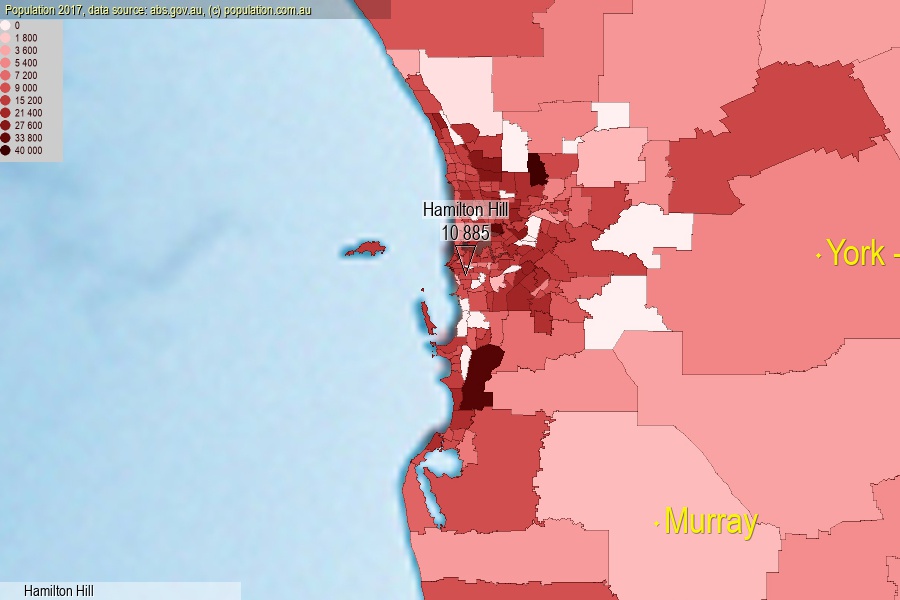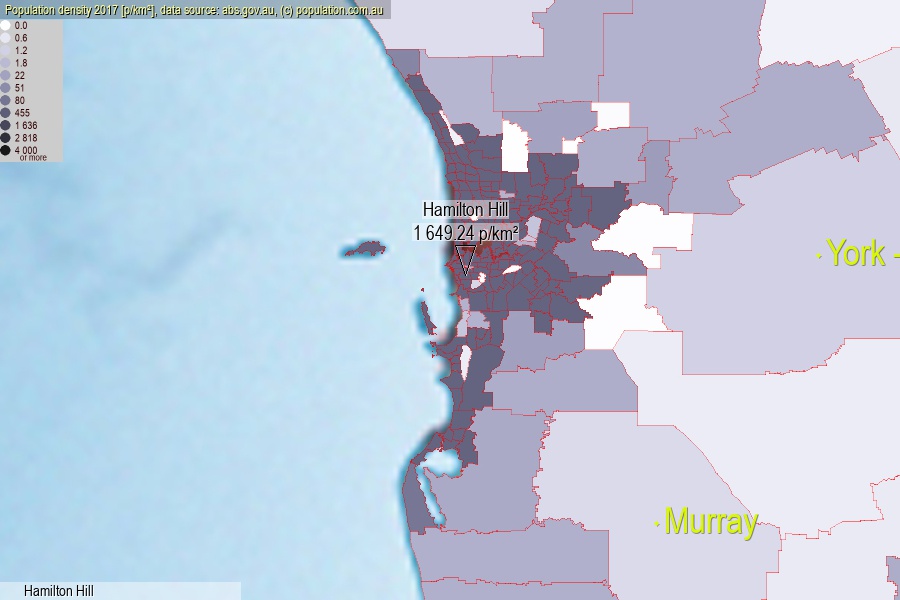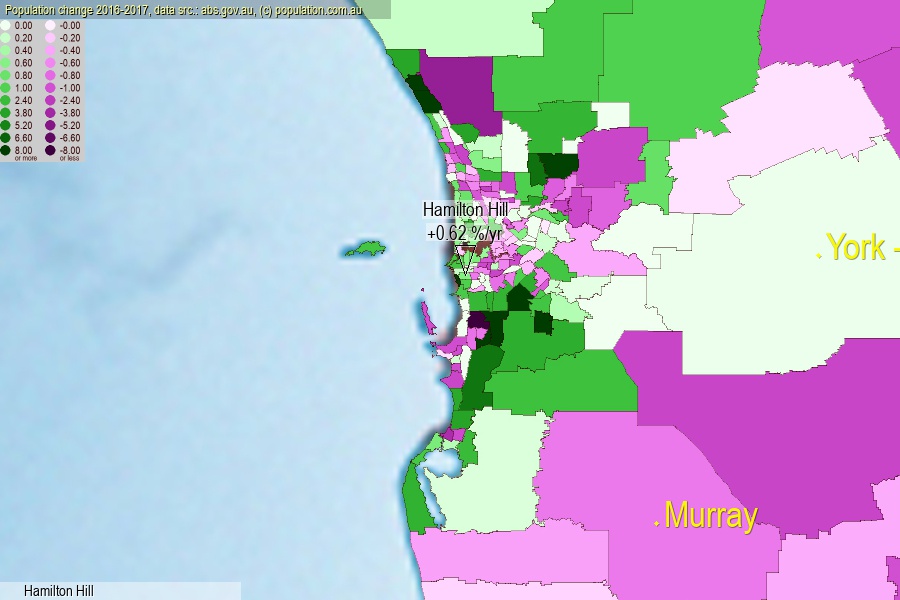 population.com.au
population.com.auLast official estimated population of Hamilton Hill (as Statistical Area Level 2) was 10 885 people (on 2017-06-30)[2]. This was 0.04% of total Australian population and 0.42% of WA population. Area of Hamilton Hill is 6.60 km², in this year population density was 1 649.24 p/km² . If population growth rate would be same as in period 2016-2017 (+0.62%/yr), Hamilton Hill population in 2025 would be 11 436. [0]



Click to enlarge. Hamilton Hill is located in the center of the images.
Population [people], population density [p./km²] and population change [%/year] [2]
View borders » (new window) [4]
[1991-1992] -0.12 %/Yr.
[1992-1993] -1.62 %/Yr.
[1993-1994] -0.75 %/Yr.
[1994-1995] -0.39 %/Yr.
[1995-1996] +0.19 %/Yr.
[1996-1997] +0.09 %/Yr.
[1997-1998] +0.21 %/Yr.
[1998-1999] +0.18 %/Yr.
[1999-2000] +0.04 %/Yr.
[2000-2001] +0.22 %/Yr.
[2001-2002] -0.47 %/Yr.
[2002-2003] -1.12 %/Yr.
[2003-2004] -0.95 %/Yr.
[2004-2005] -1.77 %/Yr.
[2005-2006] -1.39 %/Yr.
[2006-2007] +1.05 %/Yr.
[2007-2008] +1.50 %/Yr.
[2008-2009] +1.77 %/Yr.
[2009-2010] +1.47 %/Yr.
[2010-2011] +2.50 %/Yr.
[2011-2012] +2.23 %/Yr.
[2012-2013] +1.96 %/Yr.
[2013-2014] +0.14 %/Yr.
[2014-2015] -0.25 %/Yr.
[2015-2016] -1.08 %/Yr.
[2016-2017] +0.62 %/Yr.
[0] Calculated with linear interpolation from officially estimated population
[1] Read more about SA2 and Australian Statistical Geography Standard (ASGS) on abs.gov.au
[2] Population data from Australian Bureau of Statistics (Population and density: 2017; change: 2016-2017)
[3] Digital Boundaries: Australian Statistical Geography Standard (ASGS) 2016.
[4] Border coordinates are simplifyed using Ramer-Douglas-Peucker algorithm.